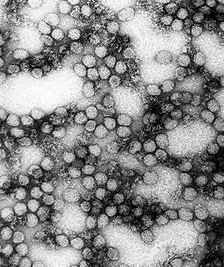Visit and Join the WeHeal Yellow Fever Community.
For more information, see: Wikipedia | InfoPlease

Yellow Fever, acute infectious disease endemic in tropical Africa and many areas of South America. Epidemics have extended into subtropical and temperate regions during warm seasons. In 1878 a severe outbreak in the Mississippi Valley killed about 20,000; the last epidemic in the United States occurred in New Orleans in 1905. Yellow fever is caused by a virus transmitted by the bite of the female Aedes aegypti mosquito, which breeds in stagnant water near human habitations. A form of the disease called sylvan or jungle yellow fever is transmitted in tropical jungles by other species of mosquitoes that live in trees. Other primates are susceptible to the disease and function as a reservoir of the virus.
Yellow fever, known historically as yellow jack, yellow plague, or bronze john, is an acute viral disease. In most cases, symptoms include fever, chills, loss of appetite, nausea, muscle pains particularly in the back, and headaches. Symptoms typically improve within five days. In some people within a day of improving, the fever comes back, abdominal pain occurs, and liver damage begins causing yellow skin. If this occurs, the risk of bleeding and kidney problems is also increased.
Visit and Join the WeHeal Yellow Fever Community.
For more information, see: Wikipedia | InfoPlease
WeHeal.org is very grateful to our valued sources of information which include Wikipedia, WebMD, ClinicalTrials.gov, Cancer.gov, Infoplease, and the US CDC (Center for Disease Control).